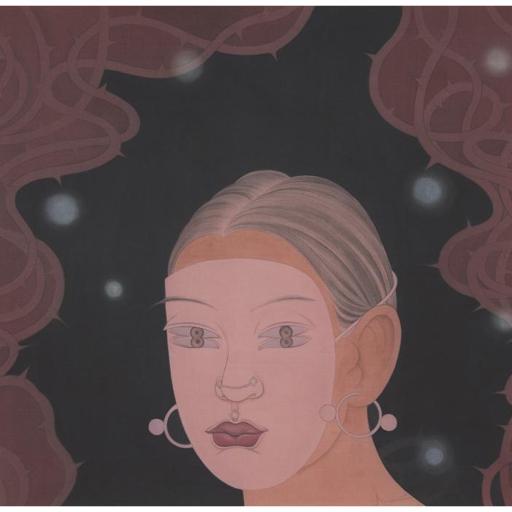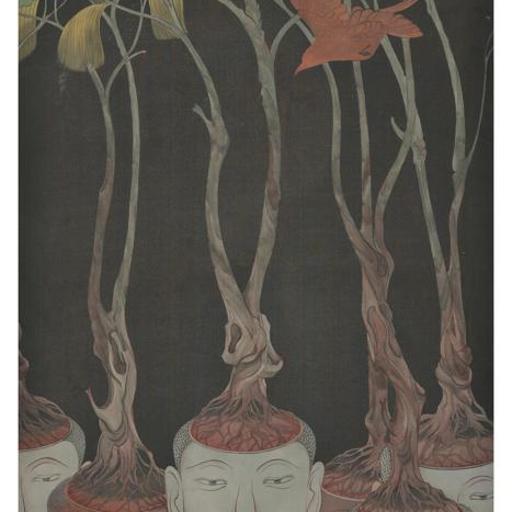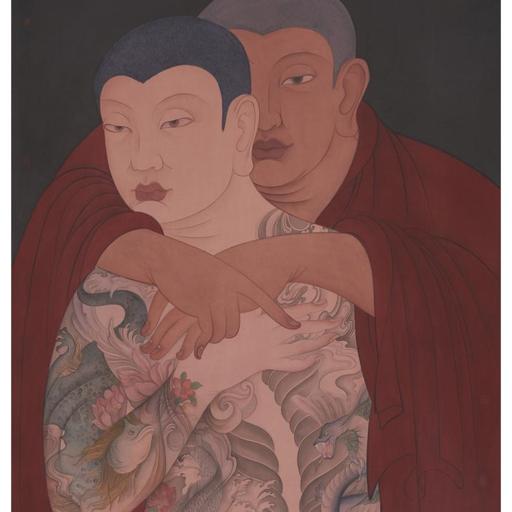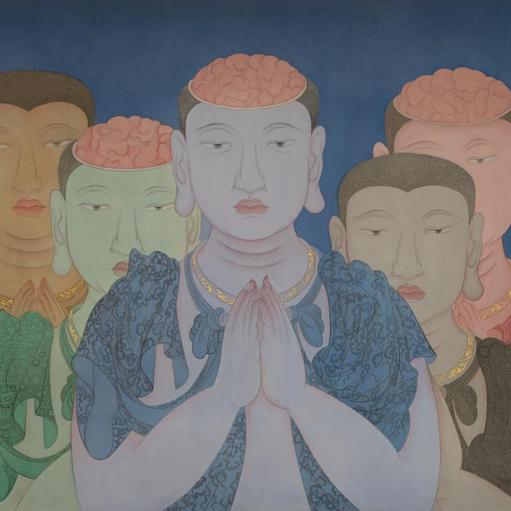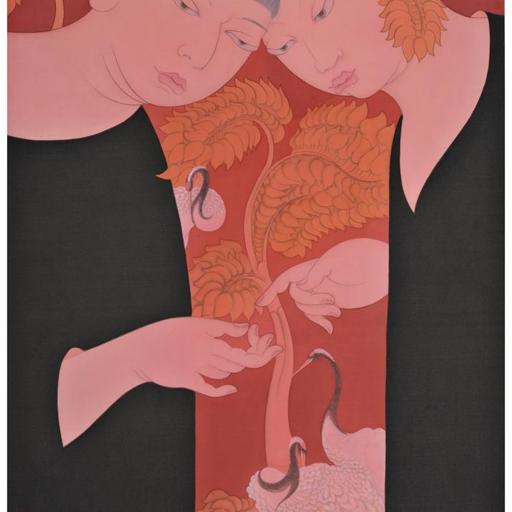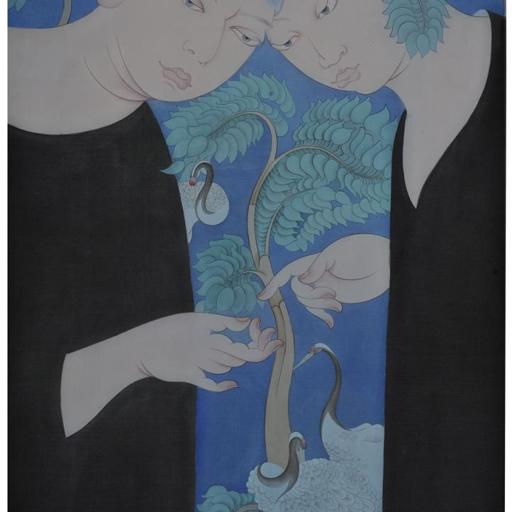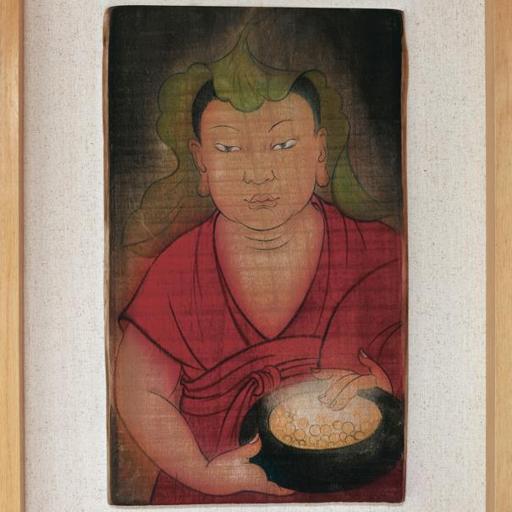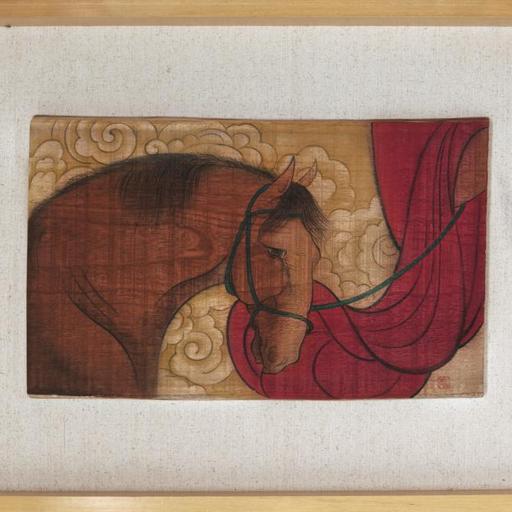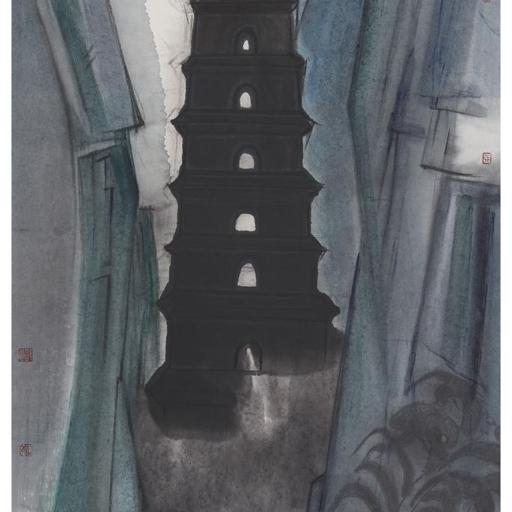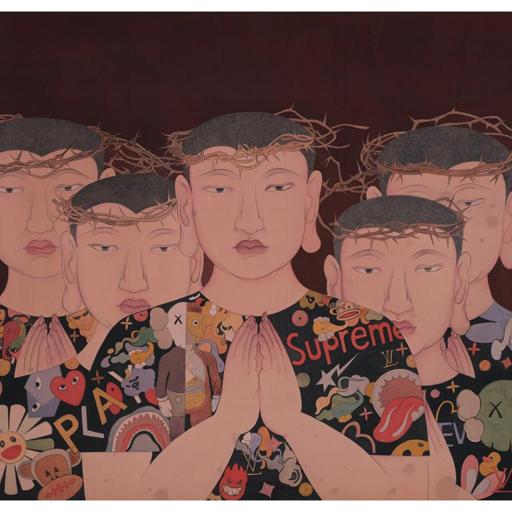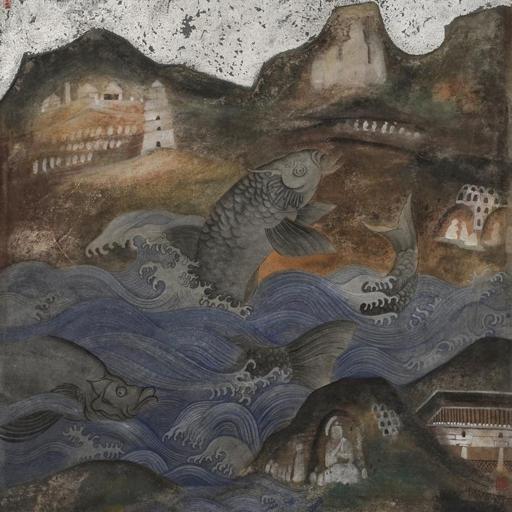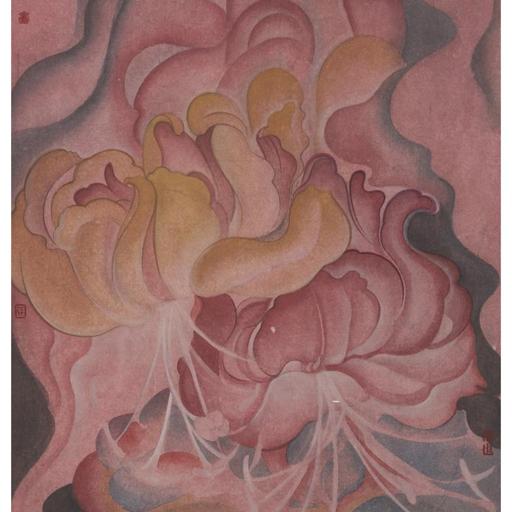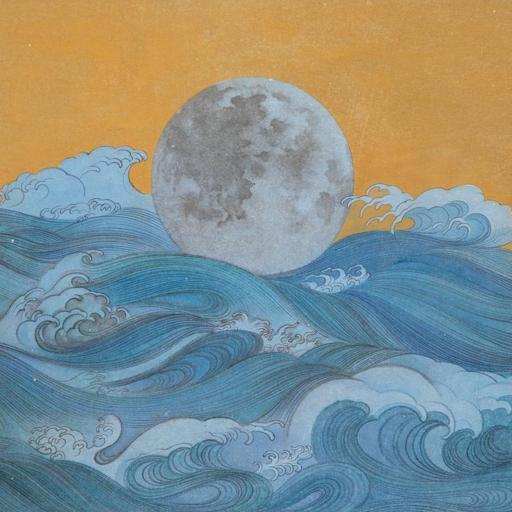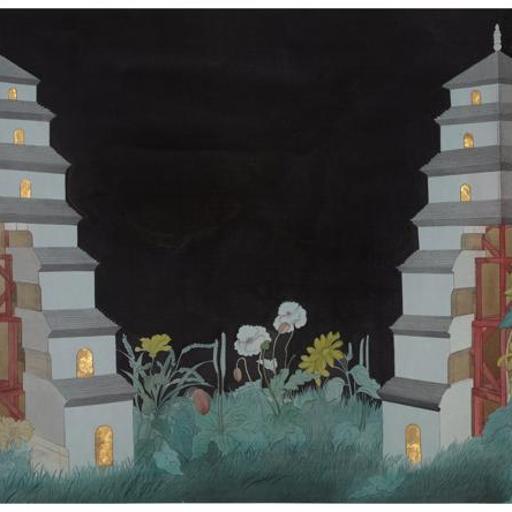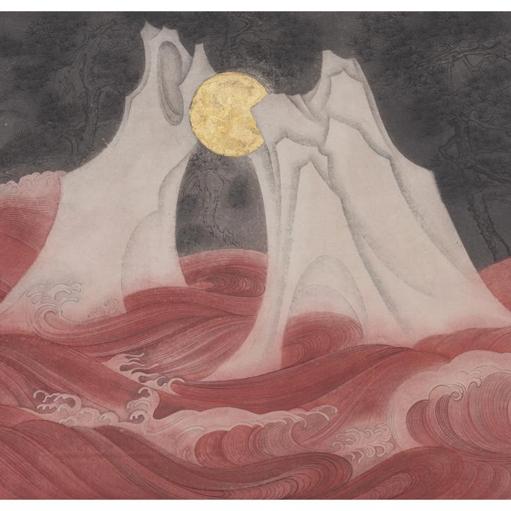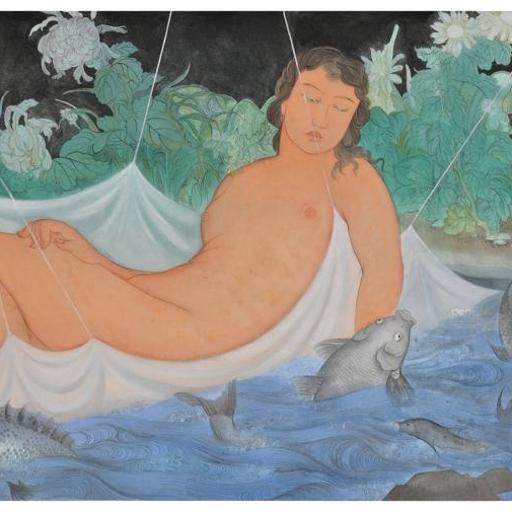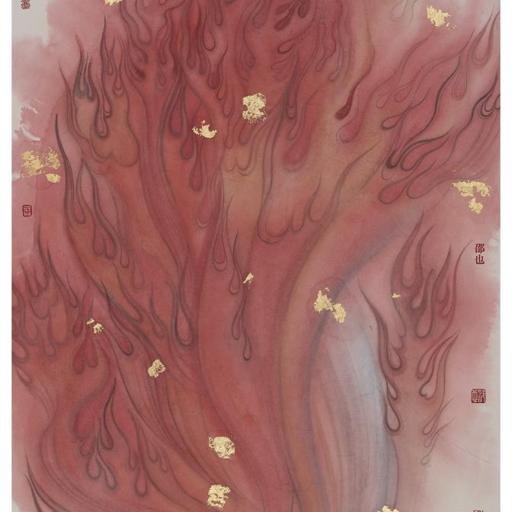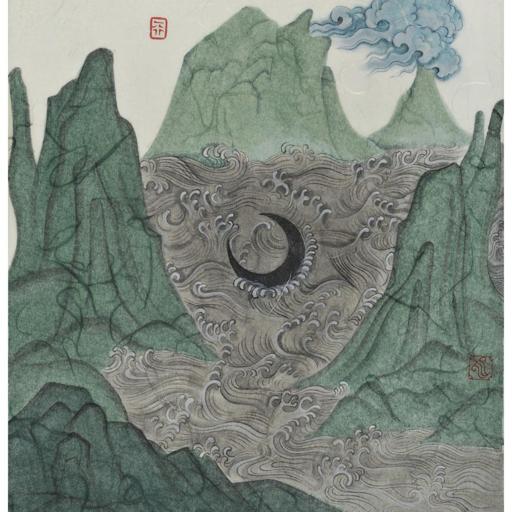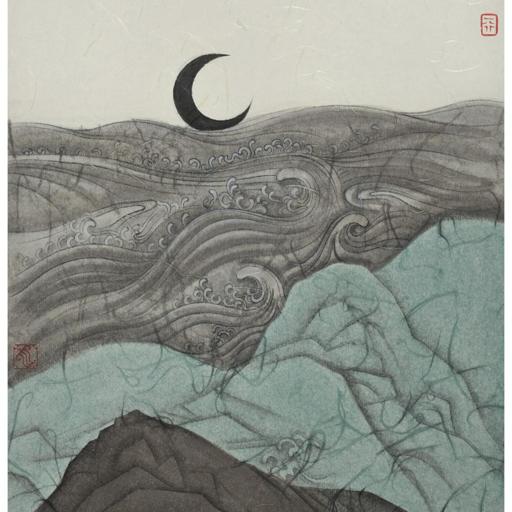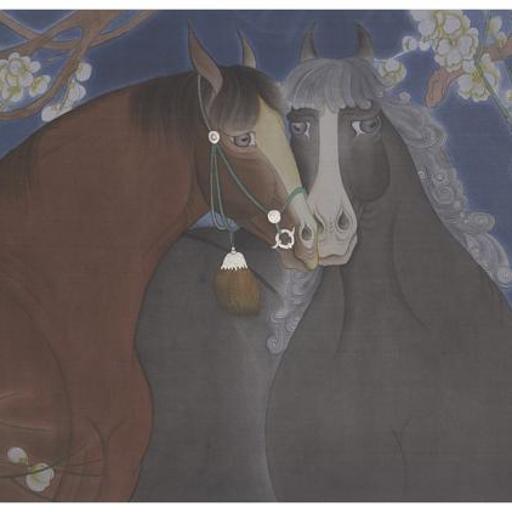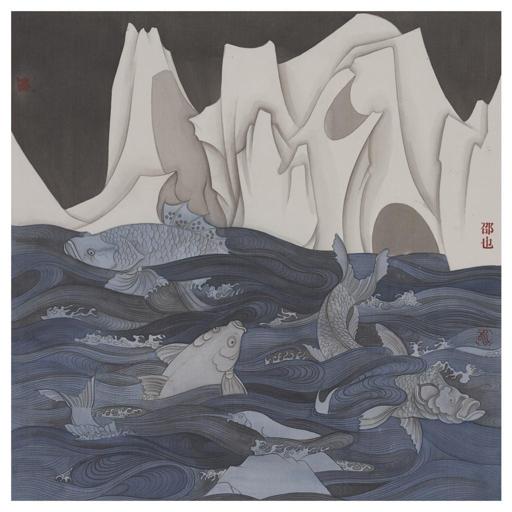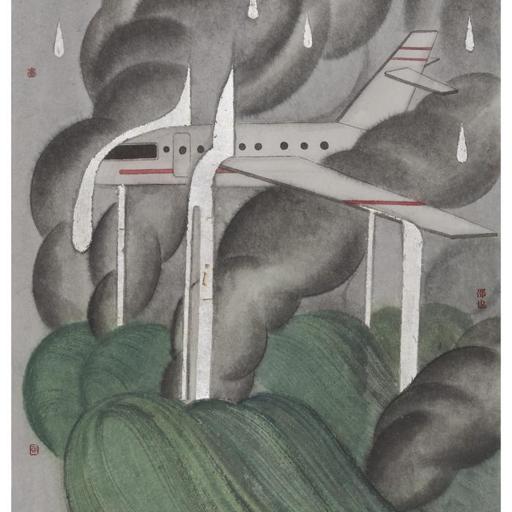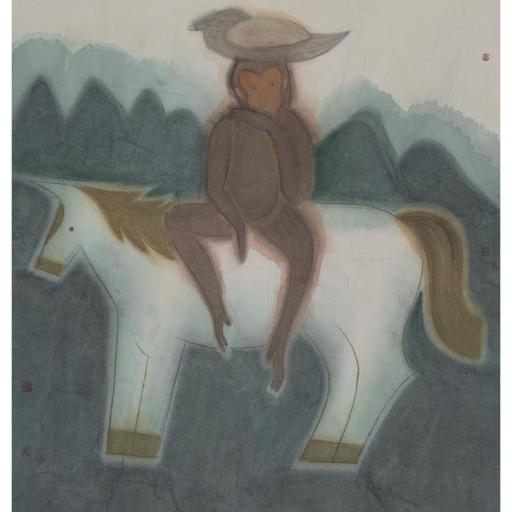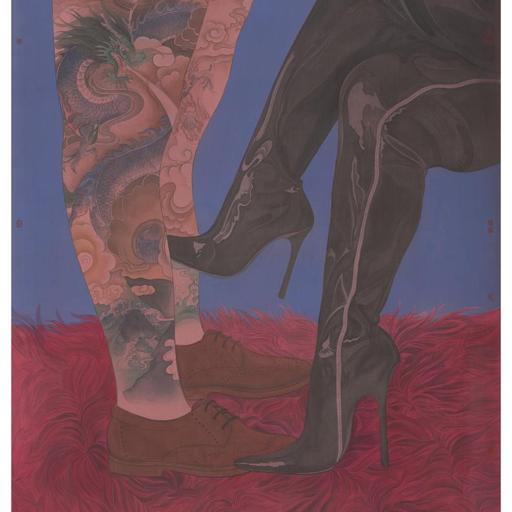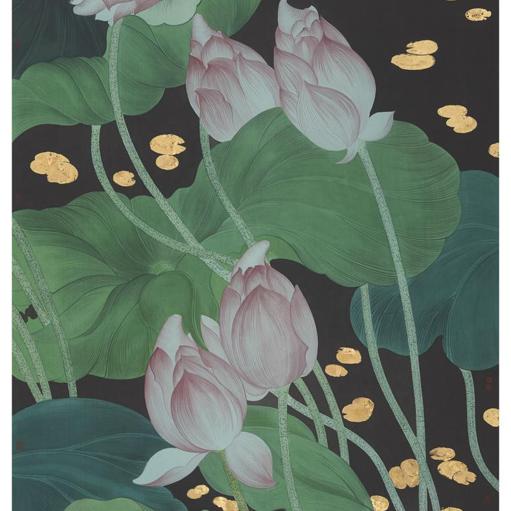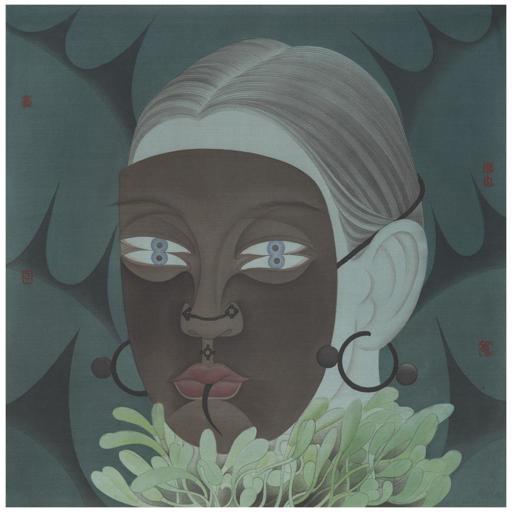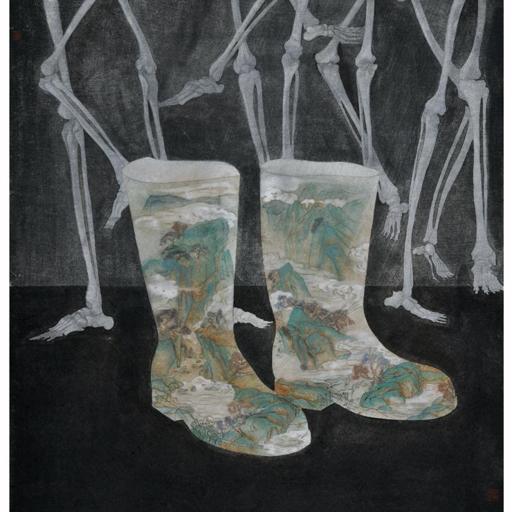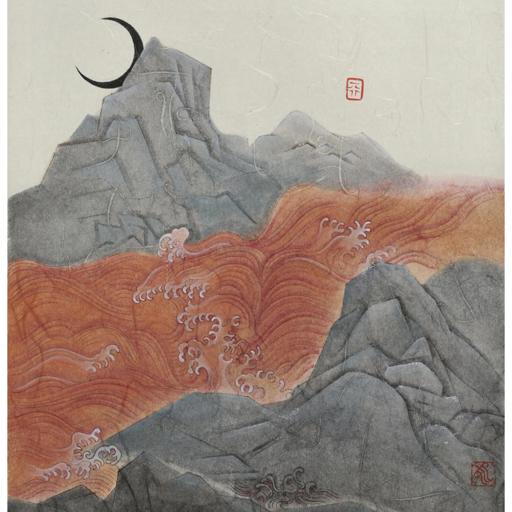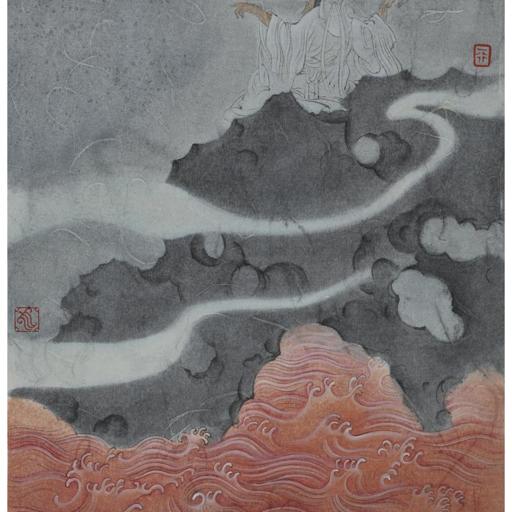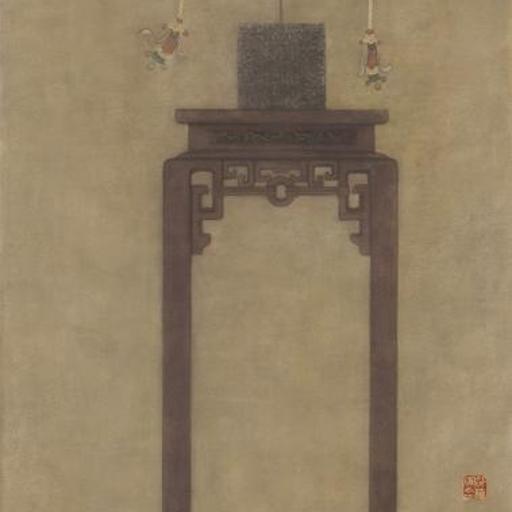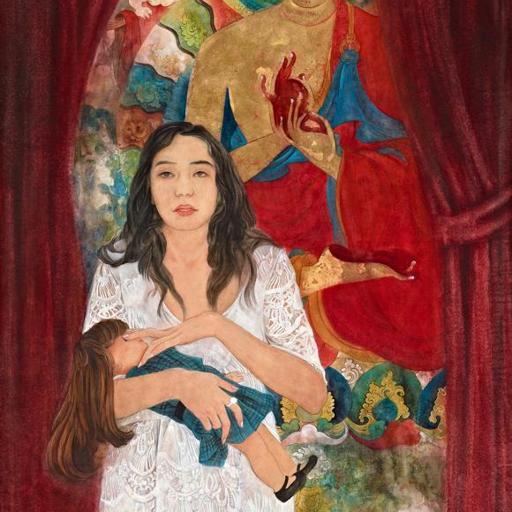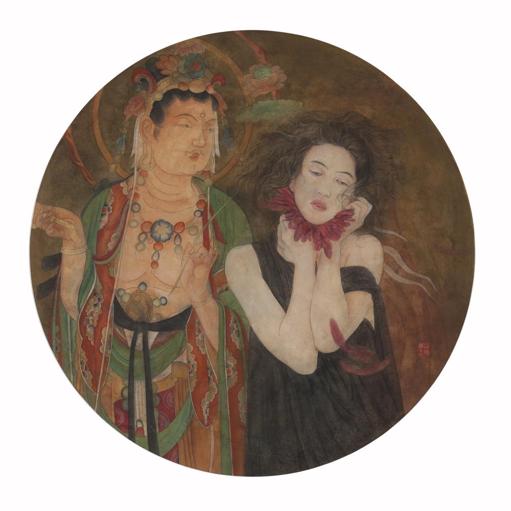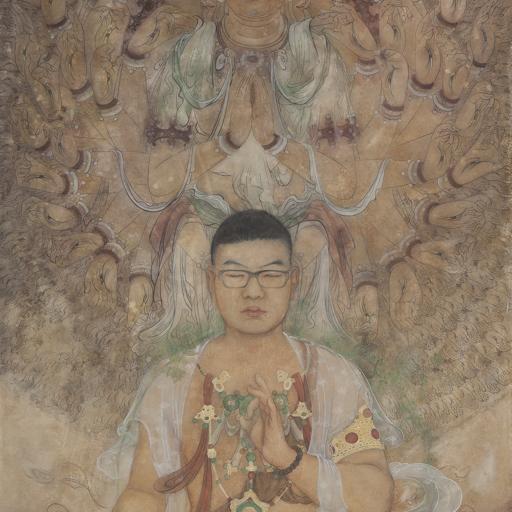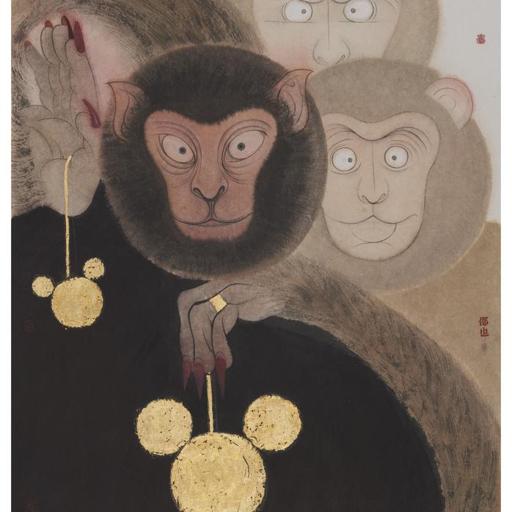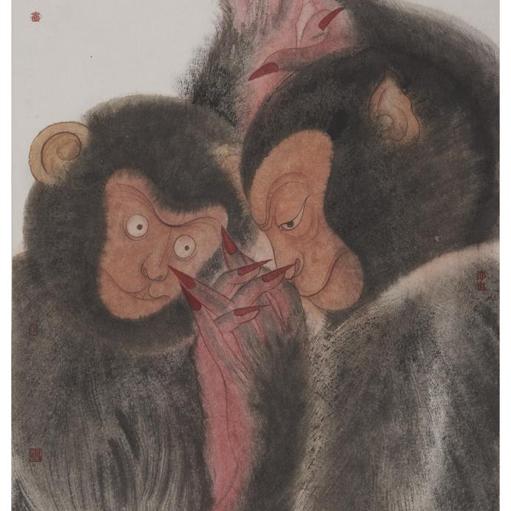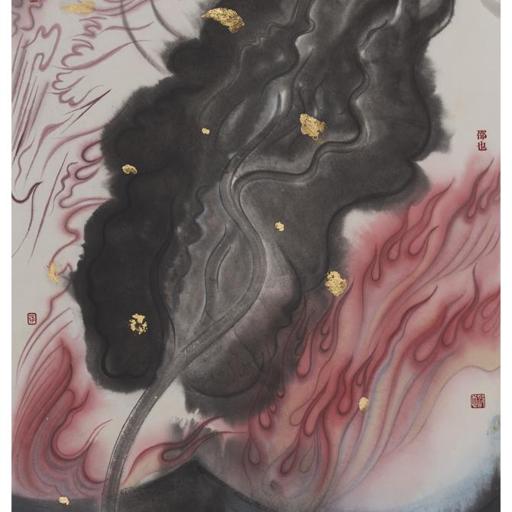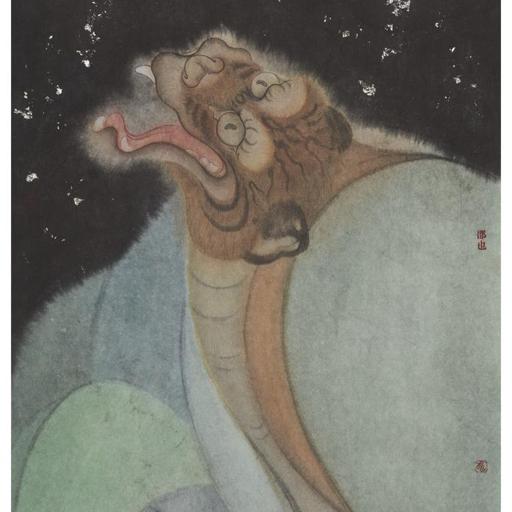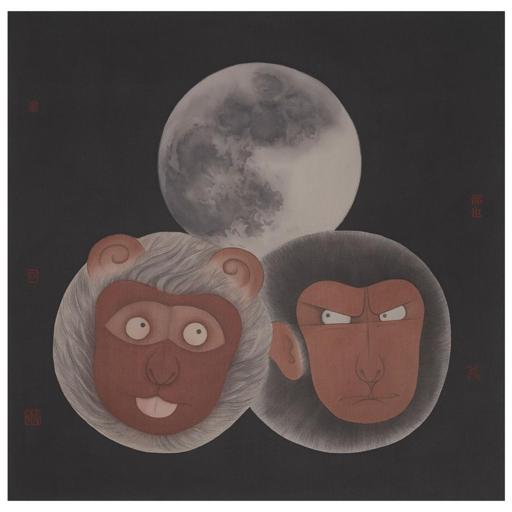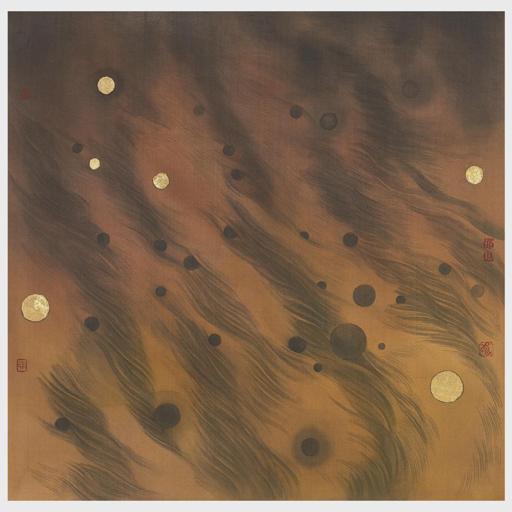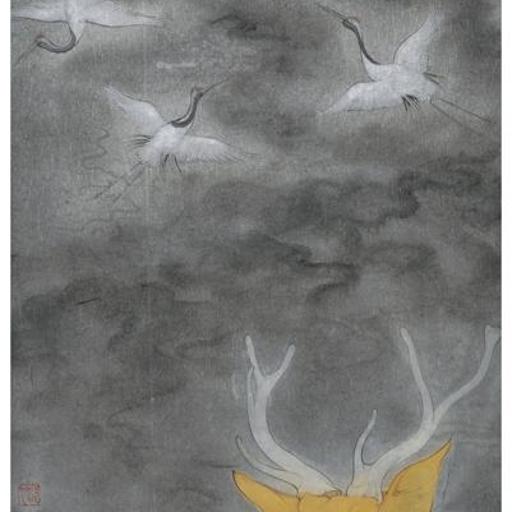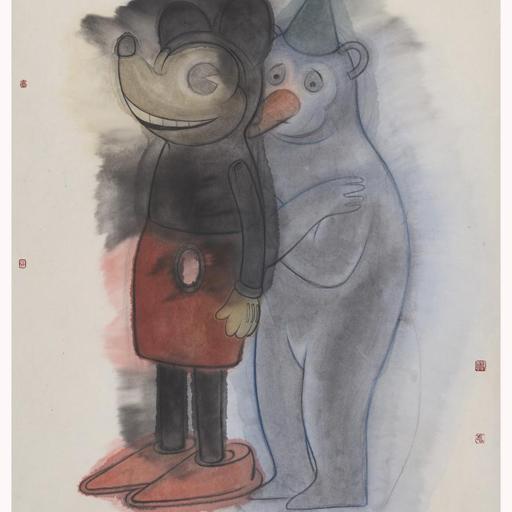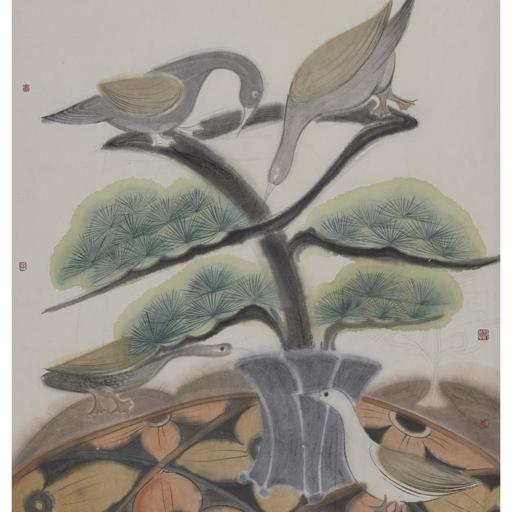Art Yourself Atelier is honored to present the debut solo online exhibition -- "Verses Whispered for You · 为你读诗" of the prodigiously gifted Chinese artist, Shao Ye.
Artist's Biography
Shao Ye, originally named Shao Xiaohui, is a graduate of the Liu Wenxi Studio, Department of Chinese Painting at the Xi'an Academy of Fine Arts. A promising young artist in the Creative Research Department of the Hunan Provincial Art Academy, Shao Ye is also a member of the Hunan Province Fine Brushwork Painting Society.
About the Solo Exhibition
This exhibition is dedicated to the artistic oeuvre of Shao Ye, encompassing six pivotal collections of his paintings.
《As It Is · 如是》
'As It Is' comes from the concept of 'Ying Zuo Ru Shi Guan', referring to the view that one should maintain. A verse from the Diamond Sutra states, 'All conditioned phenomena are like a dream, an illusion, a bubble, a shadow, like dew or a flash of lightning; they should be observed in this way.' This implies that all phenomena arising from causes and conditions resemble dreams, shadows in foam, an enigma like fog, ever changing and transient as lightning, and should thus be observed as such.
Within the specific context of 'As It Is', the artwork employs anthropomorphism to explore the relationship between dilemma and salvation. Does cohabitation require practice? A seemingly absurd question, yet behind it lurks a substantial emotional void. Marx stated that man is the sum of all social relations. As a species within nature, we have unique natural attributes; however, as social creatures, we also have common social properties inherent to humanity.
However, with the rapid development of the monetary economy, the essence of interpersonal relationships has evolved from close kinship and bartering within social groups to a contemporary exchange of values. As this process deepens, 'cohabitation' starts to become alienated and distorted, and even the act of embracing turns cramped and temporary.
The artwork freezes the scene of an 'embrace', casting a speculative gaze on the 'interpersonal relationships' that have become alienated. This series of works adopts the style of 'Buddhist statues' to downplay the gender attributes of the figures, highlighting their biological attributes, thereby metaphorically presenting a social reality of unconscious individuals and lost identities. By using tangible 'pan-religious' symbols, the works draw the emotions into a surrealistic realm. It does not affirm or follow the doctrines of any particular religion but uses the spirituality and redemptive aspect people confront in religion as a medium to explore genuine human emotional needs.
The works use silk as a medium, with the exquisite texture coupled with a restrained and precise painting language brought about by alum-dyeing. They calmly and delicately portray the subtle emotional changes of the figures in the works, creating a visual experience that appears tranquil and beautiful but underlies a surging undercurrent. The works adopt a clear composition and color scheme, refining the geometric contrasts in the figures, depicting the conflicts between the texture of objects, arranging the density of lines, and colliding the emotional properties of color to create a climax of visual contradictions. This not only enhances the absurd dramatic sense of the picture but also accentuates the emotional flow between the characters.
《Tales and Legends · 故事和传说》
"Tales and Legends" serves as an extension of the "Psychotherapy" series, employing anthropomorphism in its literary approach by juxtaposing bamboo and Taihu stones - two objects imbued with rich humanistic characteristics. These are depicted as entangled and overlapped within the tumultuous crimson waves, stumbling and staggering in their progress.
However, this is far from the noble ethos and interplay of reality and illusion depicted in Zheng Xie's quatrain, "Bamboo and Stone." Instead, the artist reflects the anxiety and indecision of literati in the rapidly changing economic age. The work mirrors the compromise, confusion, and powerlessness felt by the younger generation, caught between affluent material lives and an increasingly barren spiritual world. It subtly encapsulates the helplessness faced in the onslaught of modernization that tramples traditional spirits.
In the artwork, the graceful cranes cavorting throughout the scene visually correspond with the turbulent waves, creating a harmonious tableau of motion and tranquility with the bamboo and stones, softly soothing this anxious state of mind.
The artist uses painting as an indulgence of emotion and a fantasy of the mind - an ideal that transcends the spiritual world. Transforming meditation into the act of image creation, the artist portrays the turbulence and confusion deep within the soul through imaginative imagery, thereby illustrating the internal experiences this era offers to its viewers. The allegorical absurdity of the scenes depict the artist's inner harmony filled with skill and the contradiction of inner intentions.
《Clear Uncertainty · 清澈的暧昧》
At the epicenter of the city, a lotus pond exists, poetically dubbed the "Back Garden". As the evening lights emerge, the pond becomes a popular meeting point for couples in love. A gentle breeze stirs, ripples dance on the water's surface, and amidst the blinking neon lights, a chaotic blend of hormones pervades the air.
"Clear Uncertainty" is a series of works that employs a narrative literary approach to tell a tale of romantic idealism, of individuals struggling to maintain their idyllic vision of life and love amid the tumultuous waves of capitalism. The title artfully creates an emotional milieu teetering on contradiction and ambiguity. Through a discourse on four contemporary hot-button issues - consumerism, feminism, values, and reality - the works depict a variety of imageries steeped in oriental aesthetics such as flora and fauna, characters, and landscapes, weaving a philosophical discourse. These pieces of art strive to depict a reality akin to a two-way emotional impediment through a darkly humorous narrative style.
The lotus, a symbol of purity and unsullied beauty that emerges from the mud, becomes the first character in this theme. Its unique physical properties embody the "clear" spiritual core. The budding lotus flower, much like the female body, exudes an ambiguous hormone scent. It subtly expresses the contrasting themes of maturity and romance, joy and melancholy. By juxtaposing realism and idealism, it explores the complicated ambiguous relationship between reality and the non-real, offering a fresh perspective on the starkly different emotional states in contemporary society.
The narrative unfolds in a form of fictitious realism with the protagonists being punk youngsters with starry pupils and four-eyed girls. They are outliers with aloof personalities, their whole being suffused with a dystopian aura. Wearing masks and holding "human bouquets", they tell lies and use roses full of thorns as their link, eventually setting it all on fire. Amidst the raging inferno, they sing their love requiem.
What is love? Is it a by-product of selfish gene replication? Is it self-consolation in life? Or is it the most brilliant diamond evolved from social animals?
The artwork attempts to address these questions through a visual language of softness and hardness, fullness and sharpness, subtly implying the contrasting expressions of maturity and romance, joy and melancholy. Through the interplay of realism and idealism, it explores the intricate ambiguity between reality and the non-real, inviting a reevaluation of the vastly different emotional states in contemporary society.
The painting technique embraces the traditional meticulous brushwork, with silk as the medium, presenting a pristine and austere visual impression. Differing from traditional painting language, the extended linear shapes further accentuate the human characteristics of the subjects. The use of fading coloring technique with sketch-like lining aims to portray an inner-to-outer gradient effect, attempting to cultivate a visual paradox that is both calm and absurd.
《Psychotherapy · 精神疗法》
Heidegger once asserted, "Humans should dwell poetically on the earth." This notion, albeit idealistic, is comparable to carving a fine Taihu stone from a piece of pork belly - visually delightful, yet unsatisfying to the hunger. Adorning a space with borrowed stones offers neither freedom nor the luxury to craft jade. Reality, often contrary to desires, is mostly devoid of poetic nuance and is fraught with various psychological dilemmas.
I began to challenge these dilemmas, incinerating the meticulously carved "Taihu stone" with my own hands. As it crackled in the fire, loneliness was squeezed out, leaving me feeling lost and helpless like a child. I concede that this process was romantic, but I also vaguely sensed something within me slowly collapsing. Consequently, I was compelled to confront life with a newly formed self.
"Psychotherapy" is a series of works that attempt to discuss, from a macro perspective, the projection of micro-individuals in five major dimensions of mental predicaments: the inability to manifest labor value, self-alienation and the alienation towards "others", psychological and social issues, death through entertainment in consumerism, atomization, and macro-narratives.
From a psychological standpoint, the series embarks on speculative discourse on the timeless and relatively static theme of "ideal and reality". Based on individual romantic aesthetics characteristic of traditional Chinese culture, it focuses on the severe pain brought about by spiritual pressure, which people inevitably have to face in the gap between traditional societal expectations and the collision with the new form of life - leaving profound scars. The artworks present the contradiction between "ideal and reality" poetically through the profound mysticism and uncanny surrealistic scenes. At the same time, they attempt to break through these predicaments using a romantic humanistic sentiment, extending the belief that individuals must possess convictions, make conscious choices and reflections, and move forward with certainty, neither avoiding nor wavering.
《Devotee · 膜拜者》
The "Devotee" series has been a subject of my profound investigation in painting since graduating from the art academy. Most of the works adopt a 'Three-Distances' composition, juxtaposing reality and illusion, attempting to present an image that is both real and fictitious, balancing the concepts of the concrete and abstract consciousness.
These works portray objective objects in a realistic manner, employing a layering spatial composition, giving the works a tendency towards flatness and schematic overlapping. This intensifies the theme of 'faith' and, through personalization of classic religious imagery, evokes a 'pan-religious' ambiguity. This seemingly unorthodox 'devotion' is not about adhering to or following a specific religious doctrine, but rather using human confrontation with spirituality and salvation as a medium to explore humanity's most authentic emotional needs. What may seem like exquisite imagery and cool coloring becomes, upon deeper viewing, a thorn that inexplicably places the virtuous believers in the scene, resonating with them, and then striking at the heart.
The paintings convey a tranquil quality through all human forms and movements, juxtaposing still and active figures, one in the foreground, one behind, clearly depicting states of entering and being about to enter. The works themselves do not depict an actual scene of venerating Buddha but rather guide the placement of specific characters. Their purpose is to visually guide while intervening in the direction of consciousness, leading viewers to deep thought and reflection on their own lost purity, society's lack of faith, and human fickleness as a result of societal development.
《From Blossoms to Withered Dreams · 花至荼蘼梦为马》
"From Blossoms to Withered Dreams" (花至荼蘼梦为马) presents the cessation of spring as an allegory for the boundless galloping of freedom and dreams. Transcending the prosaic materialist dialectic, the series uses poetic metaphor, rich in philosophical speculation and imagery, to articulate the contradictory yet interchanging relationship between ideals and reality.
The concept of "imagery" refers to the subjective organization of objective phenomena, often multifaceted in its artistic role. In these paintings, imagery functions not only as symbolic props, representing the background and character of objects, but also as narrative tools, suggesting plot progression and psychological evolution.
Set within the context of Surrealism, the series endeavors to evoke a "Don Quixote" style of absurdist romantic aesthetics. The works translate literature into a visual language, utilizing objects to symbolize, and poeticizing the themes of "ideals and reality." It's a manifestation that celebrates both the blooming and withering phases of dreams, merging them into a coherent and evocative narrative.
His Solo Exhibition Experience
2021 · Shanghai, China
"Faith in Painting" - Solo Exhibition by Shao Ye, Yitiao Art.
2020 · Guangzhou, China
"Cautious Ink New Language" - Solo Exhibition by Shao Ye, Shang Rong Art.
2019 · Guangzhou, China
"Stories and Legends" - Solo Exhibition by Shao Ye, 24th Spring Guangzhou Art Fair.
2018 · Guangzhou, China
"Artistic Autumn Rise: Modern and Classical Art Soul Singer" - Solo Exhibition by Shao Ye, the first signed artist of the Guangzhou International Art Fair, Art Era.
2018 · Guangzhou, China
"Theory of the Prison" - Solo Exhibition by Shao Ye, 23rd Spring Guangzhou Art Fair.
2017 · Guangzhou, China
"In Search of Buddha" - Solo Exhibition by Shao Ye, 22nd Autumn Guangzhou International Art Fair.
His Group Exhibition Experience
2023 · Beijing, China
"The Warm Pressure of Time", Replaceable Space.
2022 · Shanghai, China
"Reading Poetry for You", ART021- Shanghai 21 Contemporary Art Expo, Gallery 55.
2020 · Shanghai, China
Third Bao Long Art Award's "Elegant Home" New Fine Brushwork Exhibition, Works "Stories and Legends·Bamboo", "Love" collected by Shanghai Baolong Art Center.
2019 · Guangzhou, China
"Ink and Color Book Fragrance - Contemporary Ink Art Joint Exhibition", Guangzhou Book Center Highland Cultural Space.
2018 · Hunan, China
"Prime of Life - Outstanding Works Exhibition of the Youth Painting Academy of the Hunan Provincial Art Academy", Hunan Provincial Art Academy Art Museum.
"Taiwan - The Third Cross-Strait Art Master Joint Exhibition of Hunan and Taiwan", Dongmen Art Museum, Taiwan.
2017 · Changsha, China
"Different Roads, Same Fate" - Three-person Exhibition by Wang Yongcheng, Shao Ye, Chen Qi, Yi Gallery.
2016 · Hunan, China
"Inauguration of the Youth Painting Academy of the Hunan Provincial Art Academy and the First Exhibition of Works", Hunan Provincial Art Academy Art Museum.
2015 · Changsha, China
"Towards the Border - Youth Ink Ten People Exhibition", Yuehu Contemporary Art Center.
2014 · Changsha, China
"12th National Art Exhibition Changsha Outstanding Works Exhibition", Changsha City Museum.
2013 · Xi'an, China
"Highland Highland · 3rd Western Art Exhibition Chinese Painting Annual Exhibition", Shaanxi Provincial Museum of Art.
2012 · Shanghai, China
"Asian Art Gallery Fair - China, Japan, South Korea Asian Gallery Boutique Exhibition", Shanghai Exhibition Center.
Press on Shao Ye
"Shao Ye, who grew up on the banks of the Yellow River, lives in the gentle south. Without a doubt, he is diligent and sensitive. While maintaining the traditional Chinese painting's keen representation of personal inner emotions, Shao Ye further strengthens the tension structure and visual effects of his artworks. He uses this approach to reunderstand both the national culture and his own vision, collectively presenting the spiritual predicaments encountered by contemporary humanity. In his poetically conveyed art, we can listen to the spiritual monologues wandering above the cities, and feel the freedom and warmth of the soul."
Liu Wenxi
Founder of the Loess Plateau School of Painting
Former Honorary Dean, Professor, and PhD Supervisor at Xi'an Academy of Fine Arts
"Shao Ye, a graduate of Xi'an Academy of Fine Arts, lives in Xi'an, the ancient capital of sixteen dynasties, where the spirit of inheritance and innovation flows in his veins. The rich emotions in his works are most enchanting, with a strong infectious power. The narrative style of literature, coupled with poetic expression, gives his works a feeling of reading like spring trees and evening clouds. It's like a pot of aged fine wine, where one needs to taste carefully to appreciate the flavor within. Shao Ye has undergone rigorous training in traditional Chinese painting and has a deep study and research of Eastern aesthetics. He maintains a nearly stubborn artistic lifestyle, with strict self-discipline, perfect and exquisite. This can be glimpsed from the clever composition, high-quality lines, imagery, and scenic color system in his works. He has always been very serious and steady in advancing his artistic concepts in a relatively traditional painting method. While paying tribute to the classicism of the academy, his works present a very inner and valuable quality, and the picture also presents a rather advanced personal visual system. In China, there is a unique deductive method for Chinese people. This is under the long-term political and social environment, the expression requirements for specific things and personal emotions, and a very complicated symbol system is established. This system is well utilized in Shao Ye. He uses the symbolic system of objectifying things and the modeling method of adapting to objects, grafting his communication with the universe, with life, and with all beings. Therefore, when we read Shao Ye's works, we must go through the process of unraveling, slowly entering his heart from his paintings, and entering our own spiritual world for introspection and exploration. Inside, there are anxious emotions, painful struggles, and also the joy of being overjoyed, which we can empathize with. However, we need to step by step into the picture to understand him and understand ourselves at the same time."
Sun Xiaofeng
Former Deputy Director of the Extension Department of the Guangdong Art Museum, Curator
Art Director of Shanshang Space
Member of the Academic Committee of the Guangdong Art Museum
"Shao Ye has always been pursuing a kind of intuitive painting that originates from his attention to his inner self. His introverted character makes him avoid grand themes, instead choosing the delicate emotional expression in life. In terms of painting language, he pursues the simple traditional painting method, calmly narrating the warmth of the world. Through silk and ink, a traditional Eastern aesthetic expression, he hides emotions under the picture, presenting a visual impression of 'calm on the surface, undercurrents in the heart'. The recognition of 'self-identity' has always been a life proposition he has been trying to clarify. Whether it is figurative characters or transcendental animals, he has weakened the narrative way of traditional meticulous brushwork painting, instead, he depicts with a partial perspective, sharp lines, and flat coloring. It magnifies people's search for the 'real' emptiness in familiar yet indistinct scenes, thereby reflecting the spiritual predicaments faced by individuals under the reality of the information age. Shao Ye regards art as the indulgence of emotions, the fantasy of the soul, an ideal transcending reality in the spiritual world, turning meditation into creation on canvas, letting the surging and confusion deep in the soul flow out of the door of art. His unique painting style is a reenactment of his unique personality and life, showing people this era's inner experiences with thought-provoking images. His picture modeling has a strong subjective creativity. He adheres to Xie He's 'according to objects' modeling method in the Six Laws of the Southern Qi Dynasty, uses literary methods such as 'metaphor' and 'personification' to carry out poetic depiction, and transforms language into a 'metaphysical' image expression. 'Image' often serves multiple roles in his works, it can serve as a symbolic object for the creative background and the nature and identity of things, acting as a tool-like prop; it can also hint at the development and changes of the story plot and psychology, acting as a narrative prop. He paints freedom, love, and ideals, depicting these romantic feelings that transcend real life, like a lyric poet in the capitalist era, with calm and delicate silk and ink, achieving a modern and tragic temperament. To a certain extent, modernism is essentially heroic. It is that the individual heroes of the traditional era cannot compete with modern society, and thus achieve a tragic self-realization in the unyielding struggle."
Yin Shuangxi
Deputy Editor of "Art Research", Central Academy of Fine Arts
"The meticulous brushwork of Shao Ye is characterized by an intense thorniness. Rarely is there a tender "illusory realm" in his compositions for a moment of respite. Rather, he often wrestles with the sharp "hard-edge" and "tri-alum, nonuple-dye" techniques, pushing a stark "solitary-blade" type of visuality onto the spectators. This impels an abrupt reflection on what he's expressing and plunges one into a profound mode of introspection.
Today, we are living in an era of information explosion. The immediacy of art challenges the traditional painting’s “repetitive cultivation” and “layered contemplation,” where moments of tranquility are nothing short of a luxury. Shao Ye is on a relentless pursuit in this race, with a determined yet stumbling gaze. He tends to convert his inspiration into reality at the first instance. As such, the creative process becomes an outlet, turning the layered rendering into a pathological game with oneself.
As the saying goes, "The painting reflects the painter". His frank yet restrained character enables his daily impulses and passion to be directly transposed into tangible actions. Life, however, often struggles to balance frankness and scheming. The straightforward can only retreat inwards, a dramatic conflict that aptly finds expression in his paintings. He chooses to bury the painful sensations from life within intricate lines and a diversity of ornamental hues, reserving the tender expressions for the textual subtext beneath the image.
Shao Ye's compositions harbor a robust narrative of perfectionism. Whether it's figures, animals, landscapes, flowers or birds, his stylistic modeling is imbued with a rich individualistic color. This subjectivity is a contracted expression of various life situations he confronts. His comprehensive and vibrant color system, originating from the austere decorative style of ancient Eastern grottoes and mural art, contrasts with the gentle, delicate water-like color system of "new meticulous" painting. He attempts to bestow these hues with more humanistic attributes, using high saturation to evoke a greater tug of emotions within the confines of a two-dimensional plane.
His early series "Faith" personifies religious iconography, thereby cultivating a form of "pan-religious" ambiguity. This seemingly heretical "worship" isn't about confirming or following the doctrines of any specific religion. Instead, it employs humanity's confrontation with religious spirituality and salvation as a medium to explore the most genuine emotional needs of mankind. The seemingly refined images and cool tonalities, coupled with a deep viewing, serve as a thorn, subtly compelling believers to see themselves reflected, align themselves within, and then strike right to the heart.
This seems to be the source of his obsession.
His upbringing endows him with a potent "sense of morality," enabling keen insight into human nature. When implemented into the forms and colors of his paintings, one can invariably perceive a stubborn, almost stringent narrative. Utilizing the context of traditional painting, he transforms his inner heresy from an "aria" into a declarative sentence, narrating under the guise of highly saturated protective coloration. This up-close-and-personal confrontation juxtaposed with the calm and aesthetic compositions forms a tremendous contradictory core, aligning with his self-proclaimed pursuit of an "absurdly romantic aesthetic". Hence, we can always sense contradiction in Shao Ye's paintings, like a wild beast persistently lurking within the self-woven safety zone, sounding the horns of war time and time again. In this light, the expansion of his forms and high saturation of his colors become a compromise of sorts, obscuring the sharpness of the image and masking his internal solitude and opposition.
To look long upon Shao Ye's paintings is no simple task; there is always a form of "profoundly ordinary" reality hidden behind the imagery. This inevitably leads one to consider the titan of the Vienna Secession, Gustav Klimt, who also placed a "decorative obsession" above the melancholy of life, harboring a mild lament for both himself and the world.
Shao Ye is a lover of folk ballads and singing. His approach to singing parallels his painting, delivering emotions directly into the listener's ear. It allows people to easily comprehend his pain and confusion, while also hoping to move those around him. That type of outpouring, a powerful emotional roar, fills the entire room with an overwhelming sense of righteousness through the loudspeaker. He has something to say, yet he's neither coquettishly modest like the courtly paintings of beauties like "Court Ladies Adorning Their Hair with Flowers," nor is he detached and carefree as in the "Portrait of a Scholar". Instead, he is a fusion of both, a distant murmur, with his words always hidden behind, and his confusion ever present in his songs.
Shao Ye's thrust exists between tradition and the present, both of which he finds incredibly beautiful. Such beauty, in fact, only exists due to their distance from one another. He doesn't delve into tradition to seek its roots, nor does he immerse himself in the petite-bourgeois discourse of the "new fine-brushwork" style. Rather, he chooses to expose his own purity and authenticity, using painting as a form of expression, which becomes his persistent theme in painting. In dealing with the conflict between tradition and modernity, he chooses to "present but not explain," and this temporal disarray is like a steadfast persistence within the illusions of life, a black humor that satirizes life's pain, a form of Klimt-style melancholy. "
Chen Shihu
Faculty Member of the School of Fine Arts, Hunan Normal University




